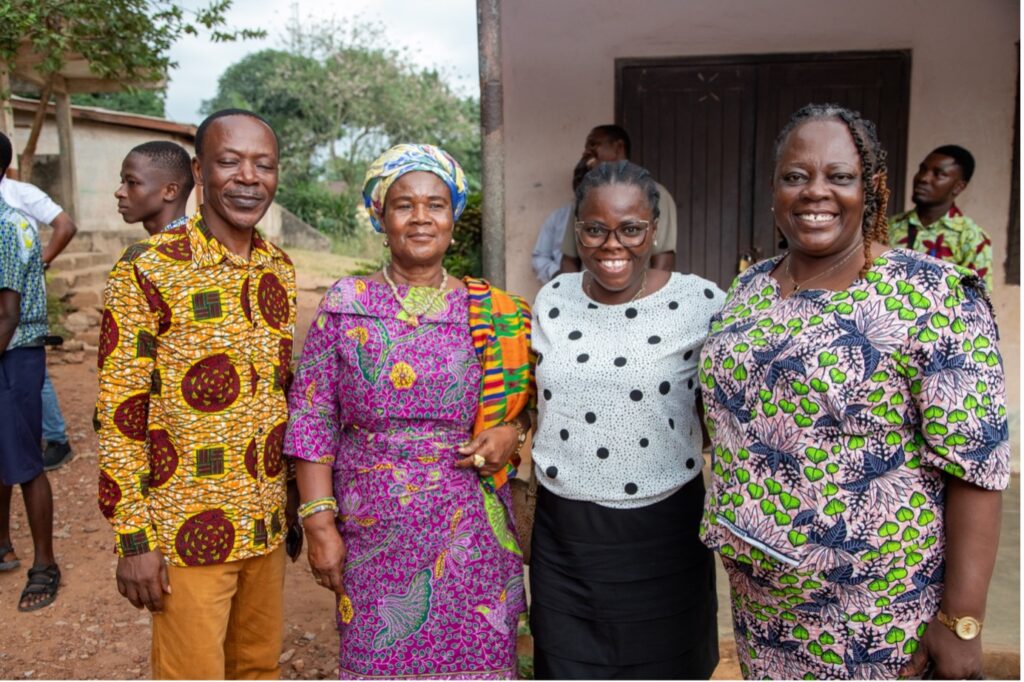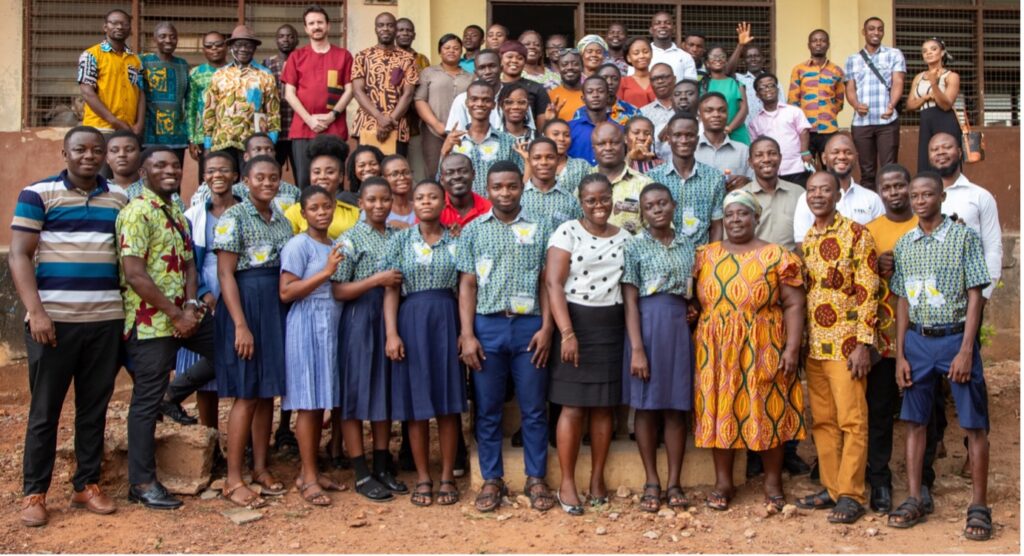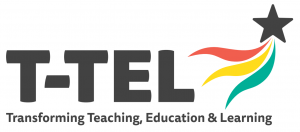The National Council for Curriculum and Assessment (NaCCA) has written an ambitious new Senior High School (SHS), Senior High Technical School (SHTS) and Science, Technology, Engineering and Mathematics (STEM) curriculum that aims to ensure that all Ghanaian young people gain the 21st Century skills and competencies to progress in further studies, the world of work and adult life. This curriculum will be rolled out nationally from the start of the 2024/25 academic year. The Ministry of Education (MoE), NaCCA and Ghana Education Service (GES) have therefore identified 33 schools to trial the curriculum before national roll-out and one of these schools is Mampong School for the Deaf.
NaCCA and GES’s commitment to Inclusive Education is demonstrated by the inclusion of Mampong School for the Deaf in the curriculum trial and the establishment of an Inclusive Education Expert Advisory Panel. This Panel, constituted by NaCCA in December 2023, is tasked with ensuring that the curriculum is inclusive and provides equal opportunities so that learners with disabilities can access quality education.
In February 2024 Mampong School for the Deaf convened a comprehensive 3-day planning session to prepare for the new curriculum. This session involved the school’s management and board, community and parents, students, teaching and non-teaching staff. The session was facilitated by representatives from GES and Transforming Teaching, Education and Learning (T-TEL) using a set of participatory approaches called ‘Managing for Learning’.
****
“The programme was good and in the right direction because the officials came to sit with us to come out with the needs of the school in order of importance and we also noted that it was the first time Deaf learners have been directly involved in things that affect us.” – Master Anthony Ayandoo, Boys School Prefect, Mampong School for the Deaf

Group photo of learners at Mampong School for the Deaf after the three-day planning session. Master Anthony Ayandoo, Boys School Prefect (middle) in the front row
Managing for Learning is based on the principle that schools and the stakeholders involved in their management, operations and governance are best placed to understand the issues inhibiting student attainment and that, with support and facilitation, they can take the lead in owning and developing solutions to their challenges. This approach allowed community leaders, parents, management, teachers and learners to collectively identify key issues affecting learning outcomes and prioritize solutions in a costed action plan.
The first day was dedicated to stakeholder identification, developing responsibility audit and mapping out those involved in improving learning and the extent to which these stakeholders were currently fulfilling their expected roles.
The second day was focused on identifying and prioritizing issues and reaching agreement on these amongst all stakeholder groups.


A facilitator writing down issues identified by the Parents and Community group

Teaching and non-teaching staff group discussing issues identified
On day three stakeholders thoroughly discussed each prioritized issue and developed practical solutions which were subsequently developed into a costed Curriculum Readiness Plan. This plan serves as a collective document outlining activities aimed at supporting the school in effectively implementing the new curriculum. The plan contains four objectives:
- Improving teaching and learning resources – including the purchase of ICT equipment such as projectors, laptops, and printers as well as supporting teachers to develop low cost and no-cost teaching and learning resources.
- Making teaching and learning more practical – the school will adopt project-based learning methodologies. This approach will be complemented by organizing exhibitions where community members can view students’ showcased work. Regular refresher training sessions will be organised for teachers to effectively implement Universal Design for Learning (UDL) principles in their teaching approaches.
- Enhancing infrastructure and the school environment – this includes purchasing desks and beds for students as well as conducting maintenance and repairs. The lighting system in the school will also be improved.
- Improving relevant policies and advocacy for Deaf education – stakeholders identified areas where they will work with agencies such as the Ministry of Education, NaCCA and GES to ensure that curriculum and assessment methods take account of the needs of Deaf learners, including the introduction of a Ghanaian Sign Language curriculum; ensuring that more teachers are proficient in Ghanaian Sign Language (GSL) and enabling Deaf learners to benefit from both academic and technical education.
GES has pledged to allocate GHS 350,000 to Mampong School for the Deaf to support implementation of the Curriculum Readiness Plan. The school community came together to collectively agree on how this funding is to be allocated across the various objectives and activities in the plan.
Sharing her experience, the Queen Mother of Mampong expressed her delight at the prospect of the school receiving such assistance from GES. She noted that her long-term commitment to the school made this support particularly meaningful: “this support from GES is huge and I am happy because it will make a significant change. While the school still has further needs, this support is a big step. I am delighted to see the positive impact it will have on the school community. Everyone, including the learners share in this happiness, knowing that brighter days lie ahead for Mampong School for the Deaf.” Nana Akua Perbea, Queen Mother of Mampong.

The Queen Mother, Nana Akua Perbea (second from left) in a group photo with management of Mampong School for the Deaf
Mr. Erasmus Ayikwei, Assistant Headteacher Academic, described the entire stakeholder engagement process as an “eye-opener” leading the school to develop their own collective solutions to improve learning. He reassured stakeholders of management’s commitment to using the funds for their intended purpose.
“The stakeholder engagement was the first of its kind organized in the school. It was an eye-opener, educative, and exciting to have all stakeholders engage themselves, resulting in crafting out a home-made strategic plan for implementation in the school. We are grateful to all stakeholders… contributions toward the crafting of the strategic plan were valuable and indispensable. Management wishes to assure all stakeholders that funds released to the school for the purpose of implementing the Strategic Plan would be strictly channeled to such a purpose.”
Master Anthony Ayandoo is the Boys School Prefect at Mampong School for the Deaf. He described the process as “good and in the right direction” and hopes that the plan will lead to significant improvements of the school, focusing on those issues which are a real priority for the students.
GES and T-TEL are grateful to their partners the Mastercard Foundation for enabling Mampong School for the Deaf to develop and implement this plan with resources provided through the Leader in Teaching (LiT) programme.
Pictures from the 3-day planning session can be viewed here: https://flic.kr/s/aHBqjBfdTg

About Mampong School for the Deaf
Mampong School for the Deaf is the only dedicated Senior High Technical School (SHTS) for the Deaf in Ghana. It was established in1975. The first headteacher of the school was Mr. Joseph Essel. The school initially enrolled 28 students, comprising 15 males and 13 females, with a supporting staff of ten. The school is situated in Mampong within the Akuapem North Municipality of the Eastern Region of Ghana along the Madina-Koforidua Road.
Unlike other SHTSs which run a three-year programme, Mampong School for the Deaf offers a four-year curriculum, with the first year dedicated to language literacy preparation. Instruction at the school is conducted primarily in Ghanaian Sign Language (GSL) with four main programs offered: General Arts, Visual Art, Home Economics, and Technical.
The school currently has 661 students comprising 460 males and 201 females, supported by 98 staff members. The school employs 13 Deaf teachers, many of whom are alumni of the school.
